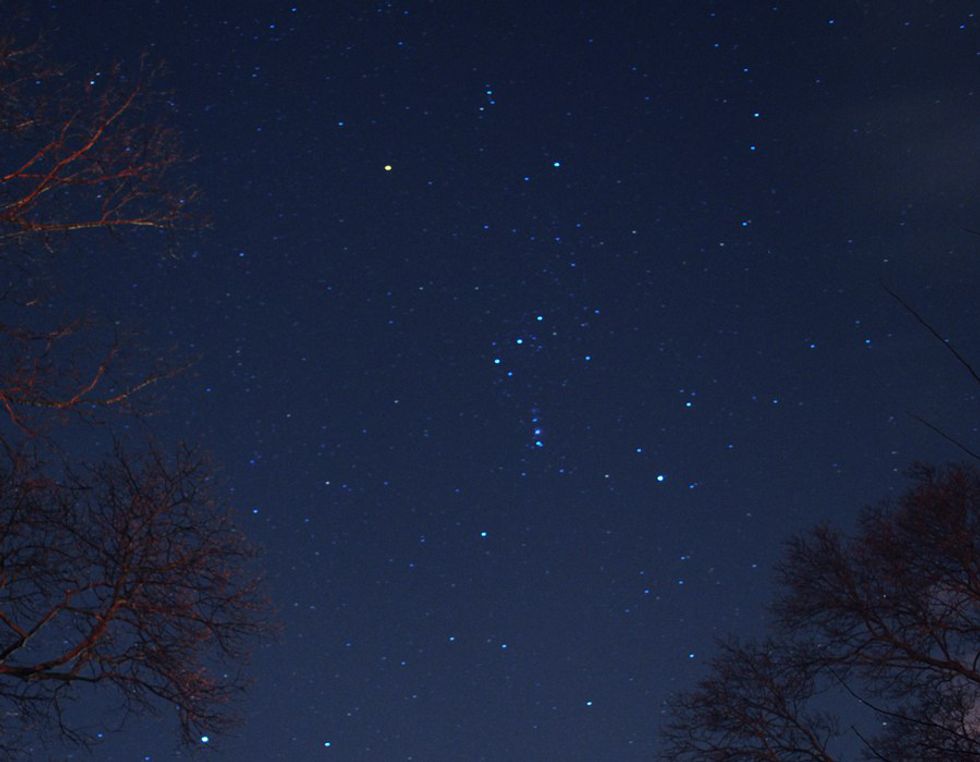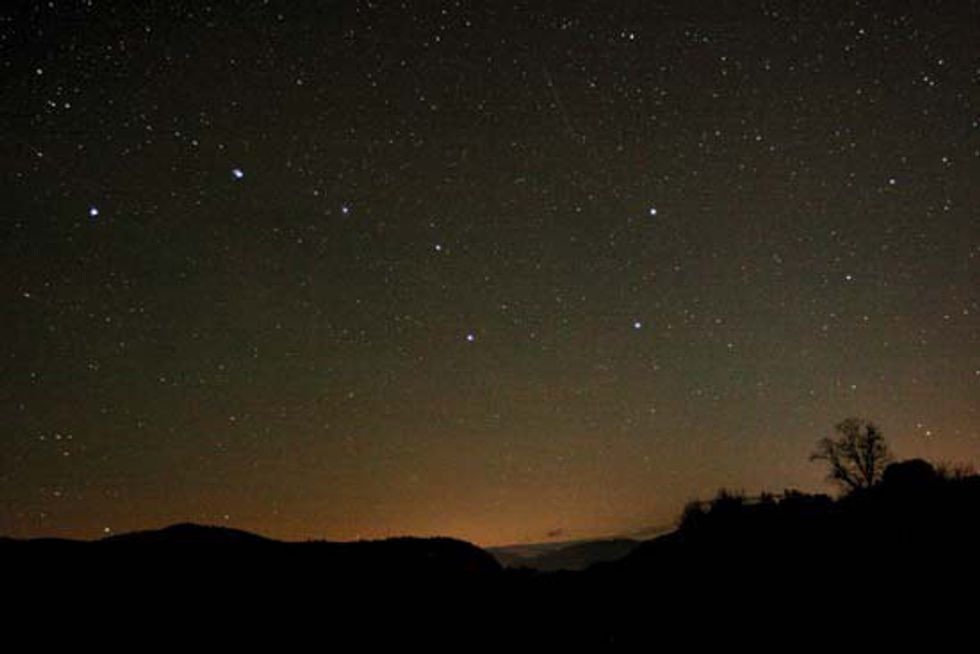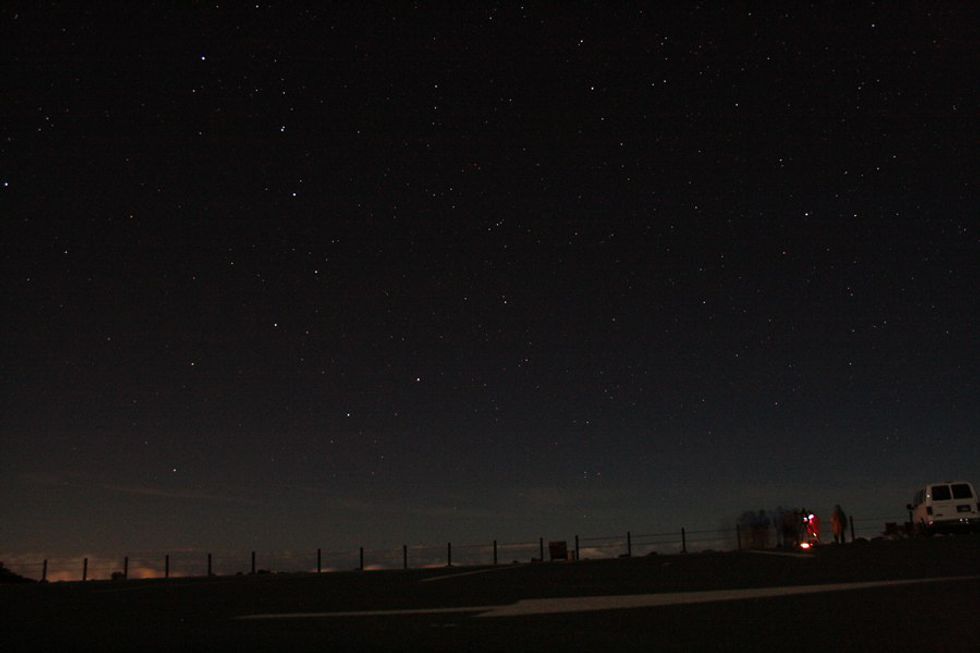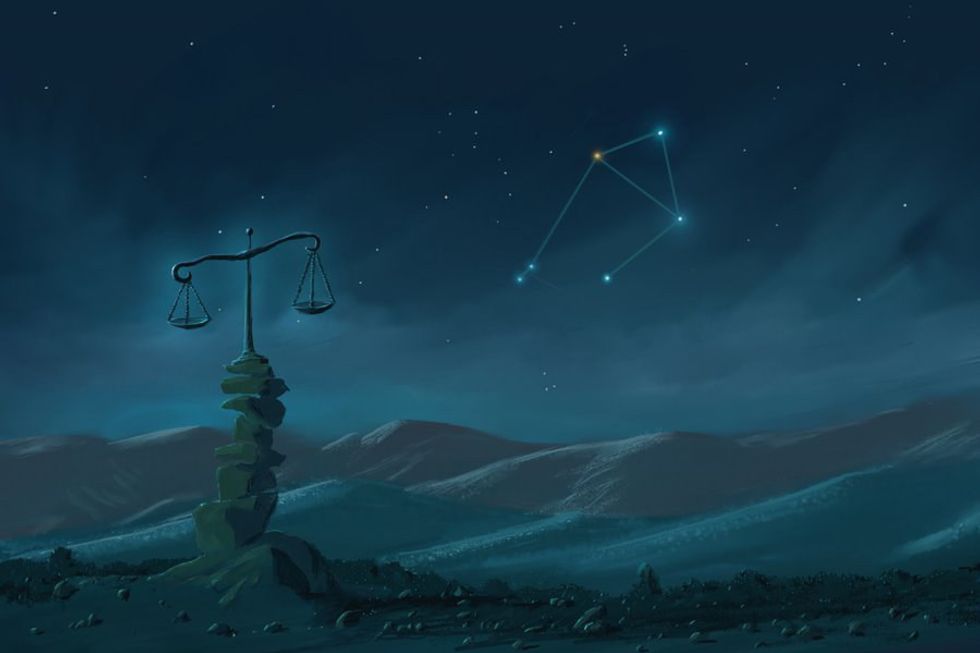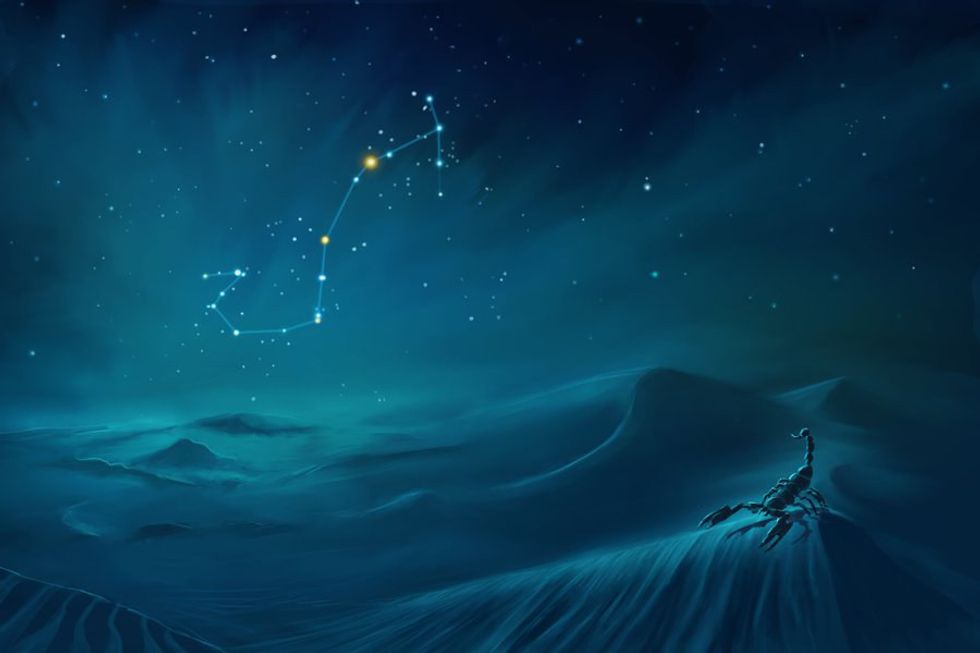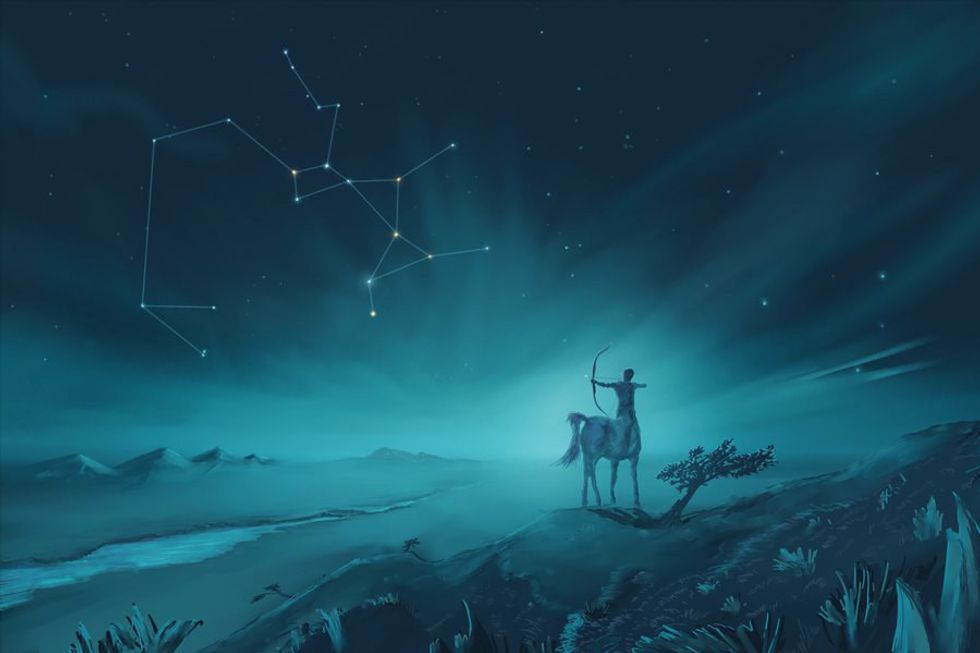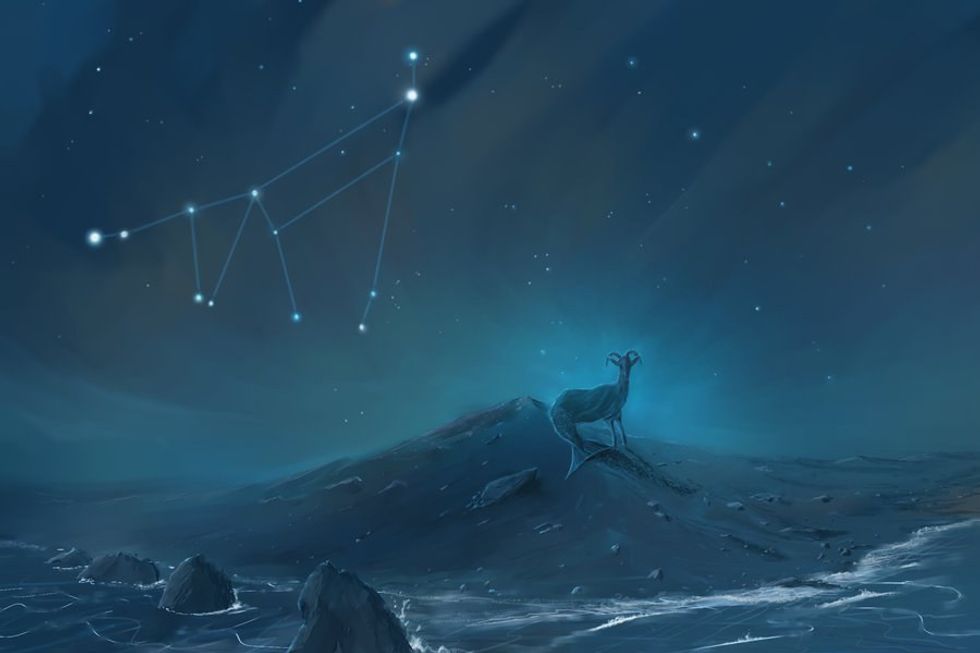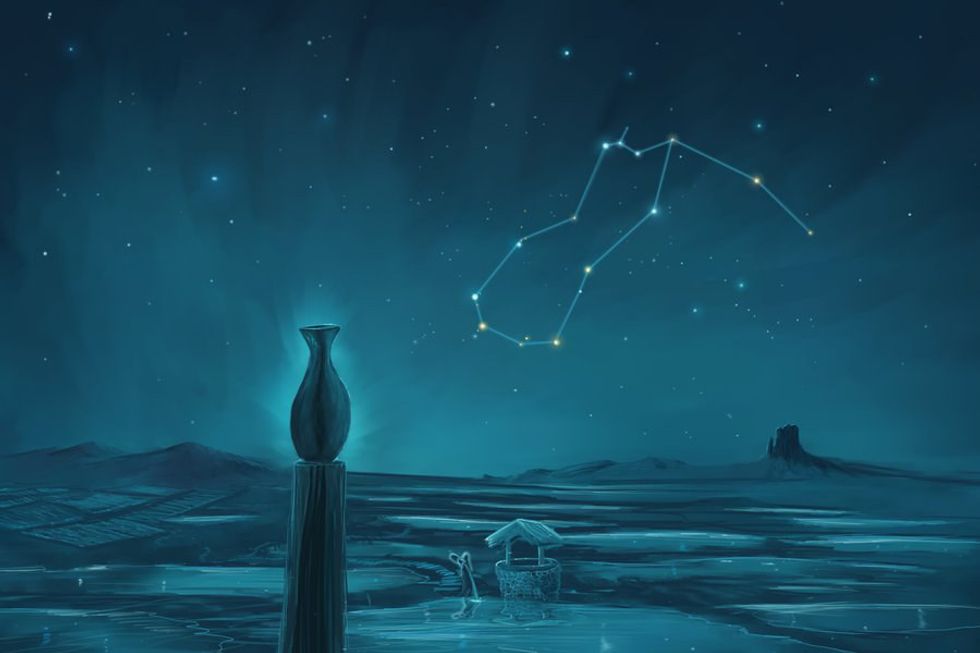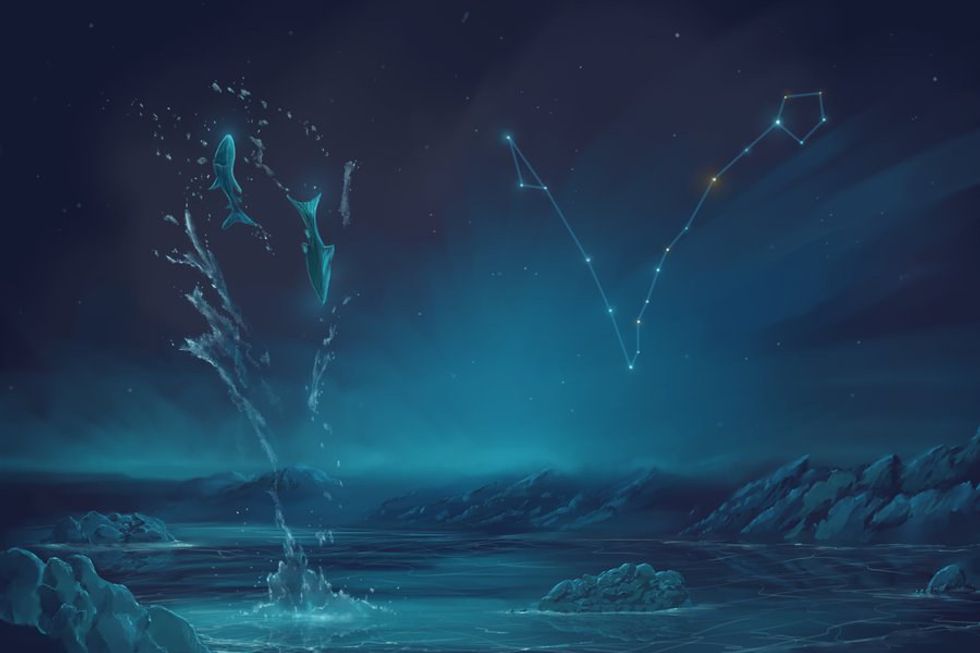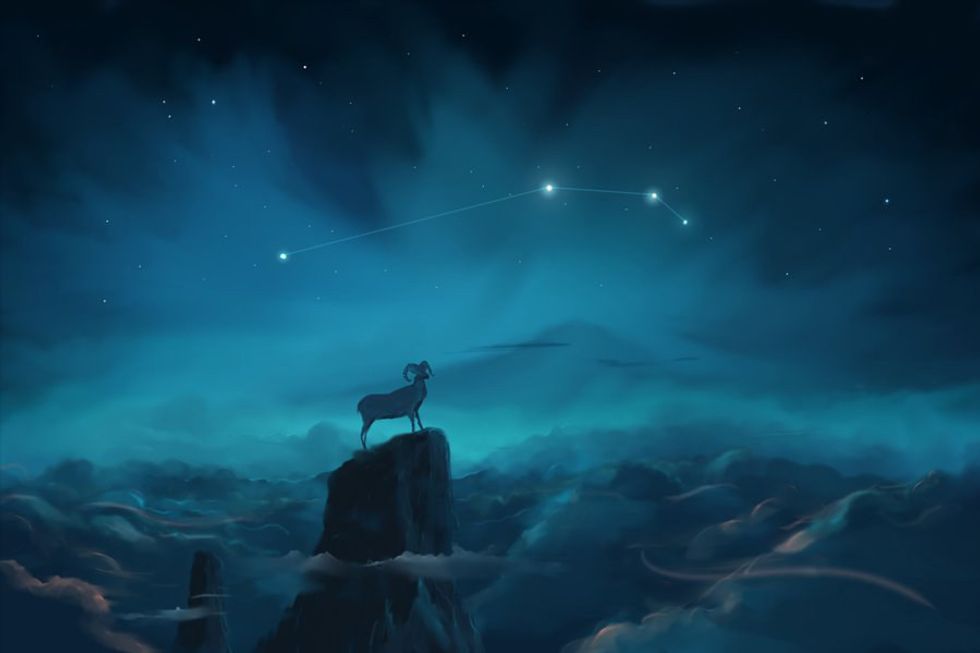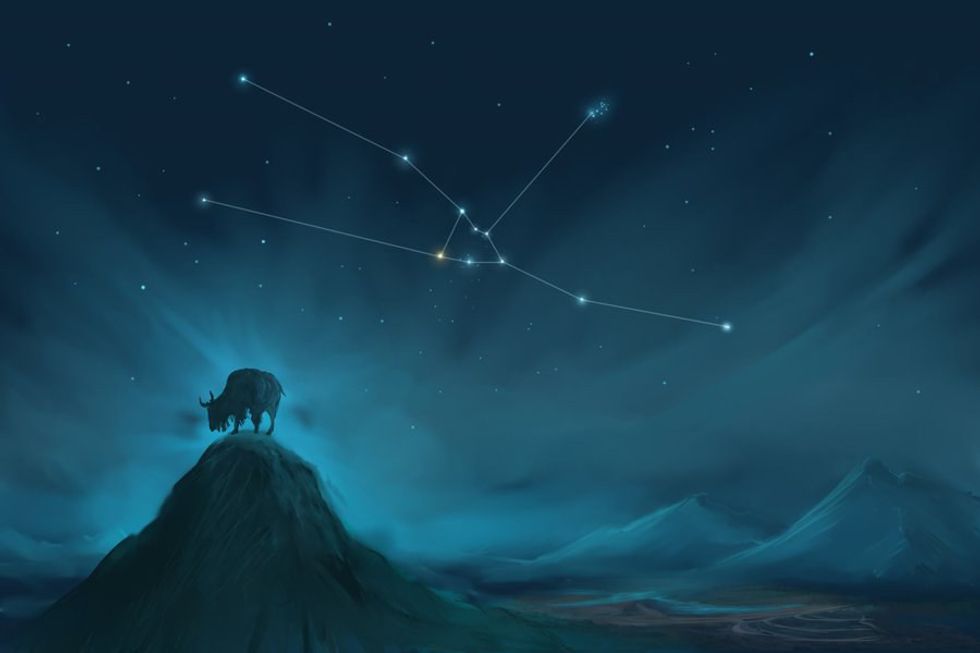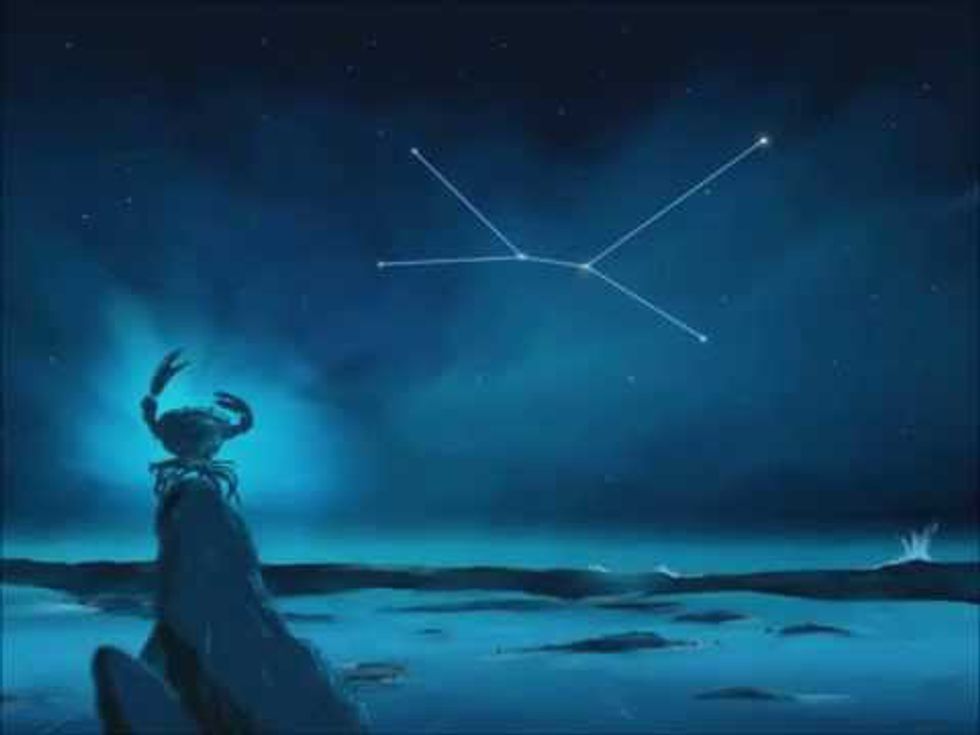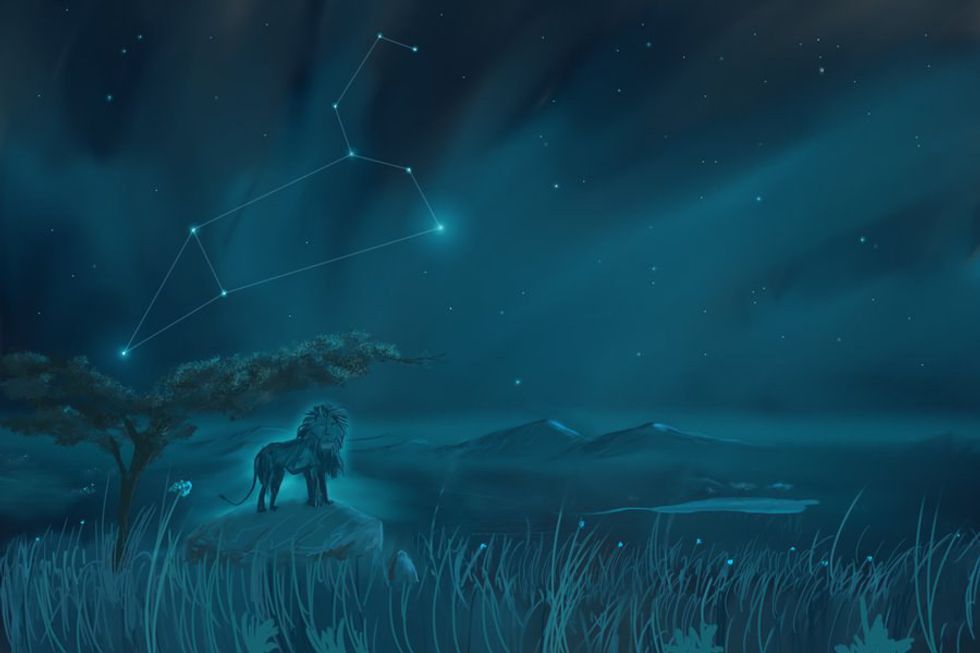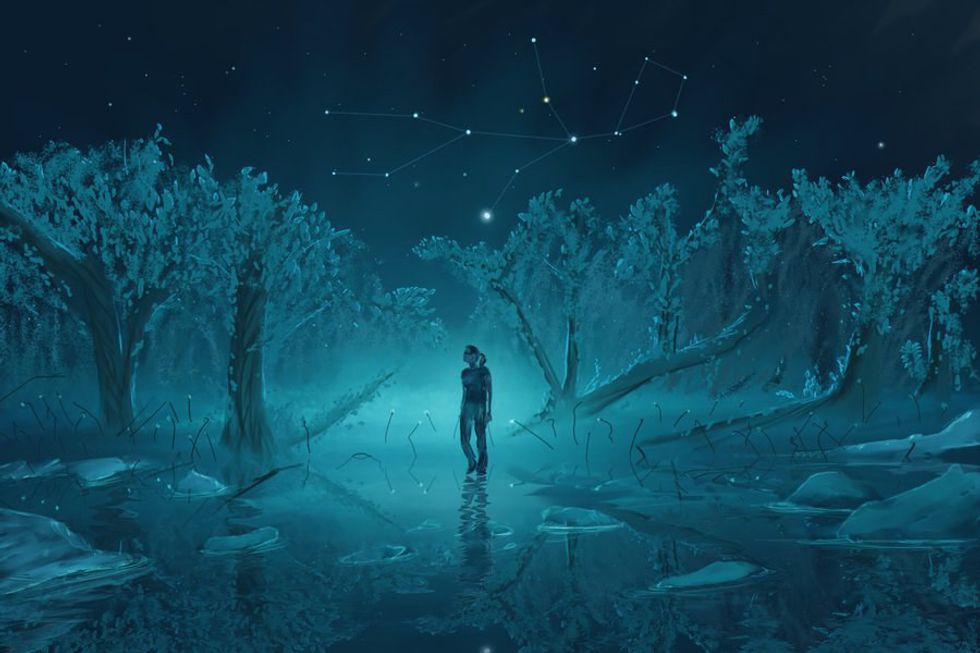Here's a new word for you: Apophenia, the tendency for the human mind to see patterns in seemingly random systems. It's the phenomenon that explains "faces in places" and all those times you've said "hey, don't those [things] kind of look like [other thing]?" Well, long ago in the faraway land of ancient Greece, everyone had a real bad case of Apophenia. They looked to the stars, randomly placed and light years away from each other, and saw the figures of their myths and legends. And thus, the constellations we know and love were born.
1. Orion
When to see it: Winter and early Spring. The hallmark of Orion is his belt, composed of three stars in a slightly skewed line. Adjacent to these are four stars, two on the top, and two on the bottom forming his arms and legs.
2. Ursa Major
When to see it: January through October. In the image, you may recognize the "Big Dipper." This is an asterism (star cluster) formed by the seven brightest stars in Ursa Major. Three stars make up the handle, with four more forming the "bowl."
3. Ursa Minor
When to see it: Summer. With dark skies, locate the big dipper, and then look outward from the top of the bowl until you see a smaller, upside down version of the Big Dipper.
4. Libra
When to see it: Summer
5. Scorpius
When to see it: Summer
6. Sagittarius
When to see it: August and September
7. Capricorn
8. Aquarius
When to see it: Autumn
9. Pisces
When to see it: August through February
10. Aries
When to see it: December
11. Taurus
12. Gemini
13. Cancer
When to see it: Late Winter and Early Spring
14. Leo
When to see it: Spring through May.
15. Virgo
When to see it: Spring and Summer.




